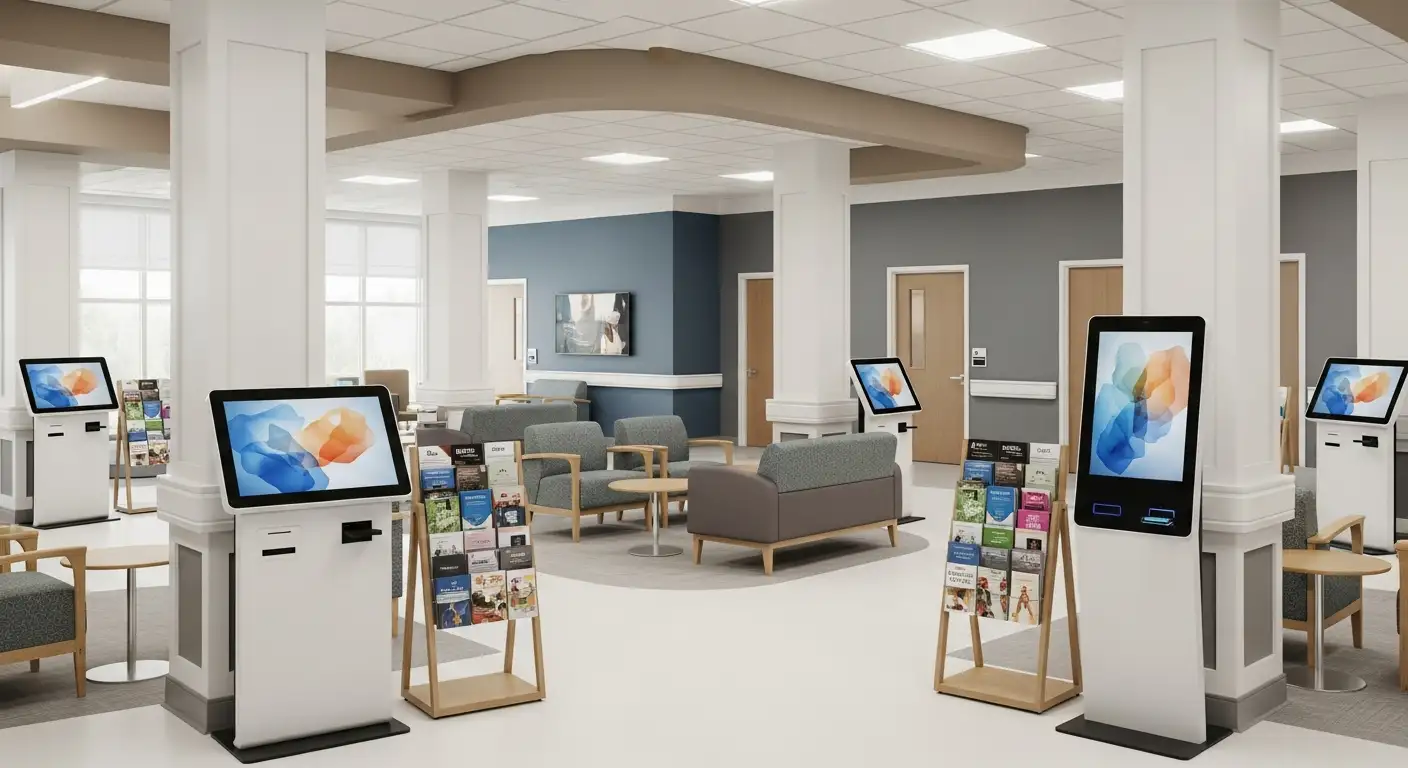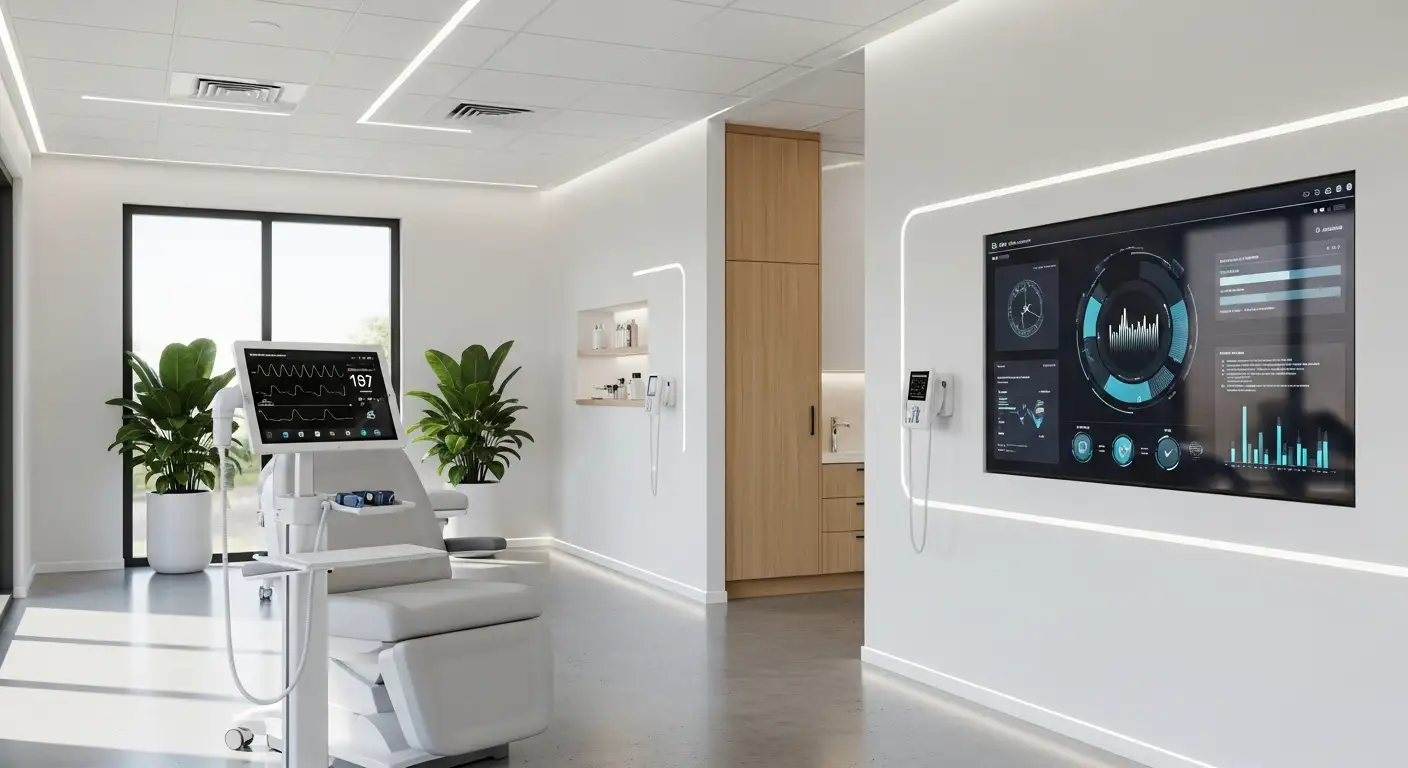Tech-Enabled Chronic Care: Where It’s Headed

Introduction to the Future of Chronic Disease Management
As the global burden of chronic diseases continues to rise—accounting for over 70% of healthcare spending—innovative technological solutions are at the forefront of transforming chronic care delivery. From digital health platforms and AI-driven analytics to remote monitoring devices and integrated EHR systems, technology is enabling more proactive, personalized, and accessible care. This article explores where tech-enabled chronic care is headed by examining proven models, emerging innovations, and the challenges and opportunities ahead.
Understanding the Foundations: Wagner’s Chronic Care Model
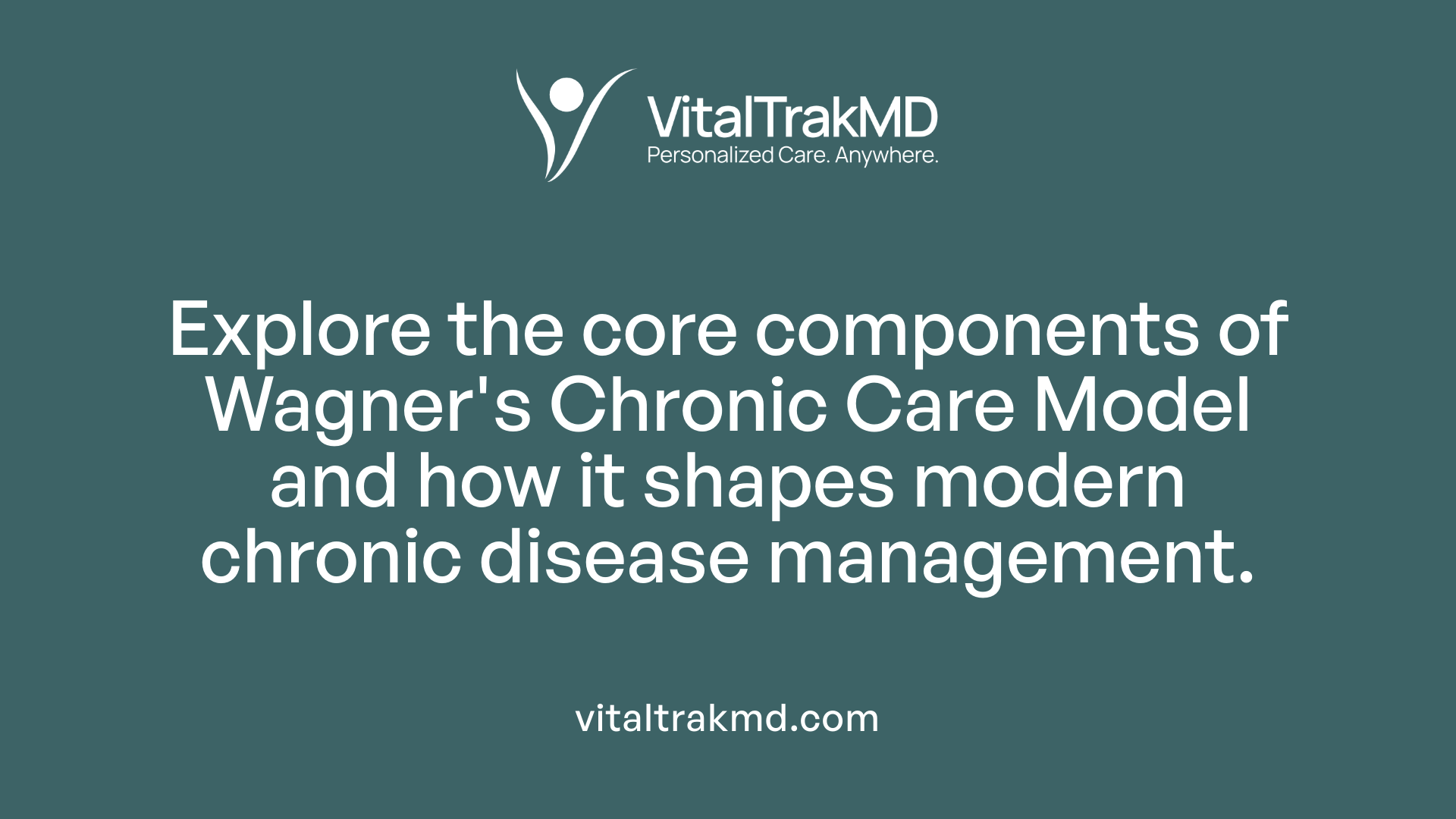
What is Wagner's chronic disease model?
Wagner's chronic disease model, known as the Chronic Care Model (CCM), was developed in 1998 to identify the crucial elements of a healthcare system that promote high-quality, proactive care for chronic illnesses. This model shifts the focus from treating episodic issues to managing health over the long term.
Elements of the CCM
The model emphasizes several interconnected components:
- Community Resources: Engagement with community organizations and support services.
- Healthcare System Support: Building a supportive infrastructure that encourages effective care.
- Self-Management Support: Empowering patients with education and tools for managing their conditions.
- Delivery System Design: Organizing care teams and workflows to optimize patient outcomes.
- Decision Support: Providing evidence-based guidelines and clinical tools to providers.
- Clinical Information Systems: Utilizing electronic health records (EHRs), registries, and data tracking to monitor patient progress.
These components work together to create a coordinated and patient-centered approach.
Role of health technologies
Technology plays a vital role within the CCM. Electronic health records (EHRs) enable care teams to access comprehensive patient data, supporting better decision-making. Telehealth and remote monitoring tools extend care beyond traditional settings, especially benefiting underserved or rural populations.
Mobile apps and web-based platforms support self-management, providing medication reminders, symptom logs, and lifestyle guidance. Decision support systems embedded in clinical workflows ensure adherence to evidence-based practices. Overall, technology facilitates seamless communication, personalized care, and continuous health management, making it possible to address the complexities of chronic diseases effectively.
The Transformative Role of Technology in Chronic Disease Management
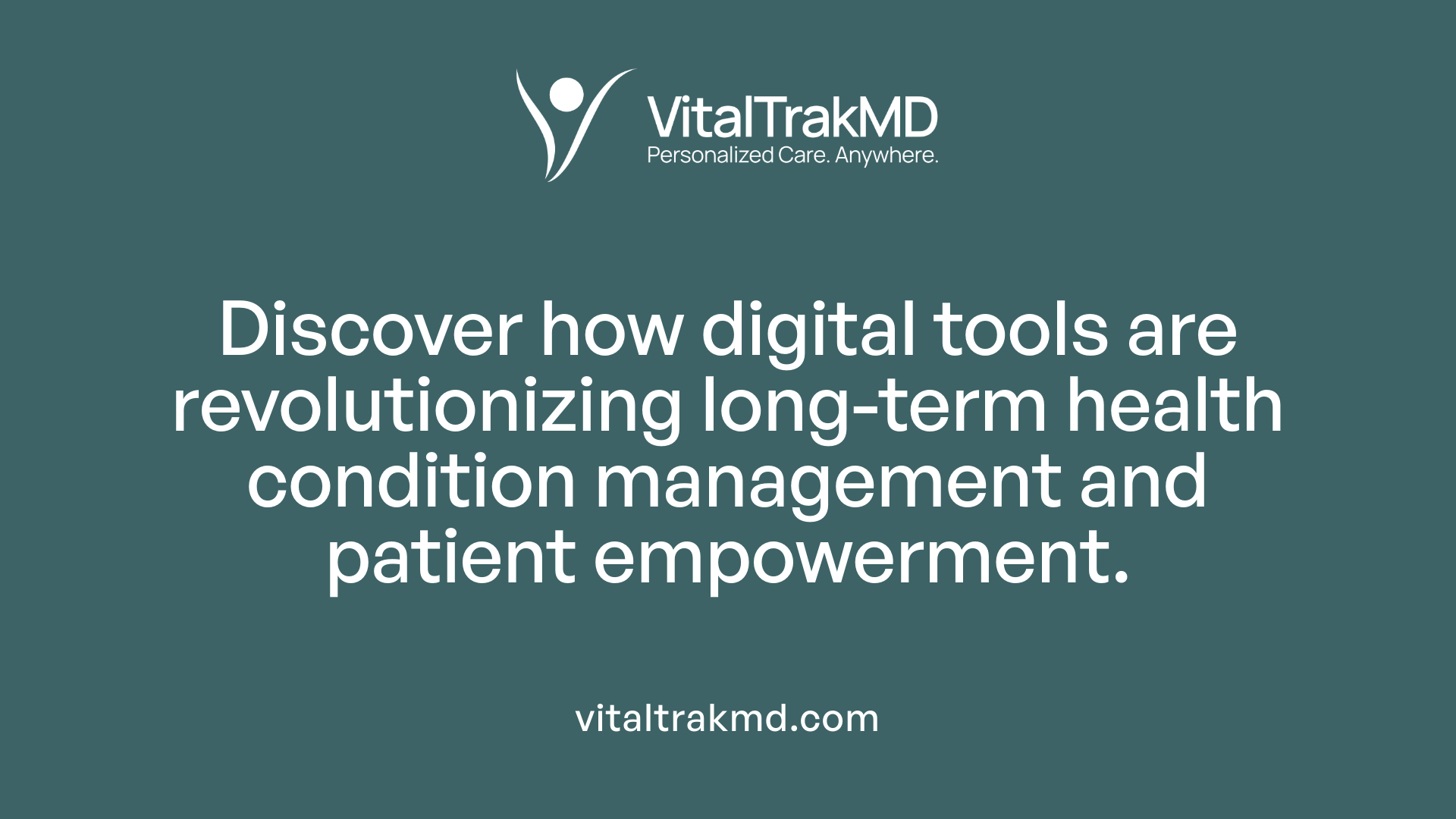
What is the role of technology in chronic disease management?
Technology has become essential in managing long-term health conditions. It encompasses various health information technologies (HIT) such as electronic health records (EHR), telemedicine, mobile health applications, patient portals, and remote monitoring devices.
These tools help healthcare providers monitor patient conditions continuously and remotely, which is crucial for diseases like diabetes, hypertension, and heart failure. For example, remote patient monitoring devices can track vital signs such as blood pressure, glucose levels, and heart rate in real-time, providing data that informs timely medical decisions.
Mobile apps and web platforms empower patients by supporting medication adherence, symptom tracking, and lifestyle management. They often include reminders, logs, and educational resources to enhance self-management.
Effective communication between patients and providers is strengthened through digital portals and telehealth services, enabling consultations, follow-ups, and education without the need for in-office visits.
By integrating these technologies within healthcare systems, providers can identify care gaps, prevent complications, and improve overall outcomes. Platforms like ChronicCareIQ exemplify comprehensive solutions that coordinate multiple care services and facilitate data sharing across care teams.
Recent literature highlights that adopting digital health tools not only increases care accessibility, especially in underserved areas, but also enhances patient engagement and clinical effectiveness. As digital health continues to evolve, its role in fostering personalized, efficient, and proactive management of chronic diseases will only grow, contributing to better quality of life for millions worldwide.
Technologies Driving Care Coordination and System Integration
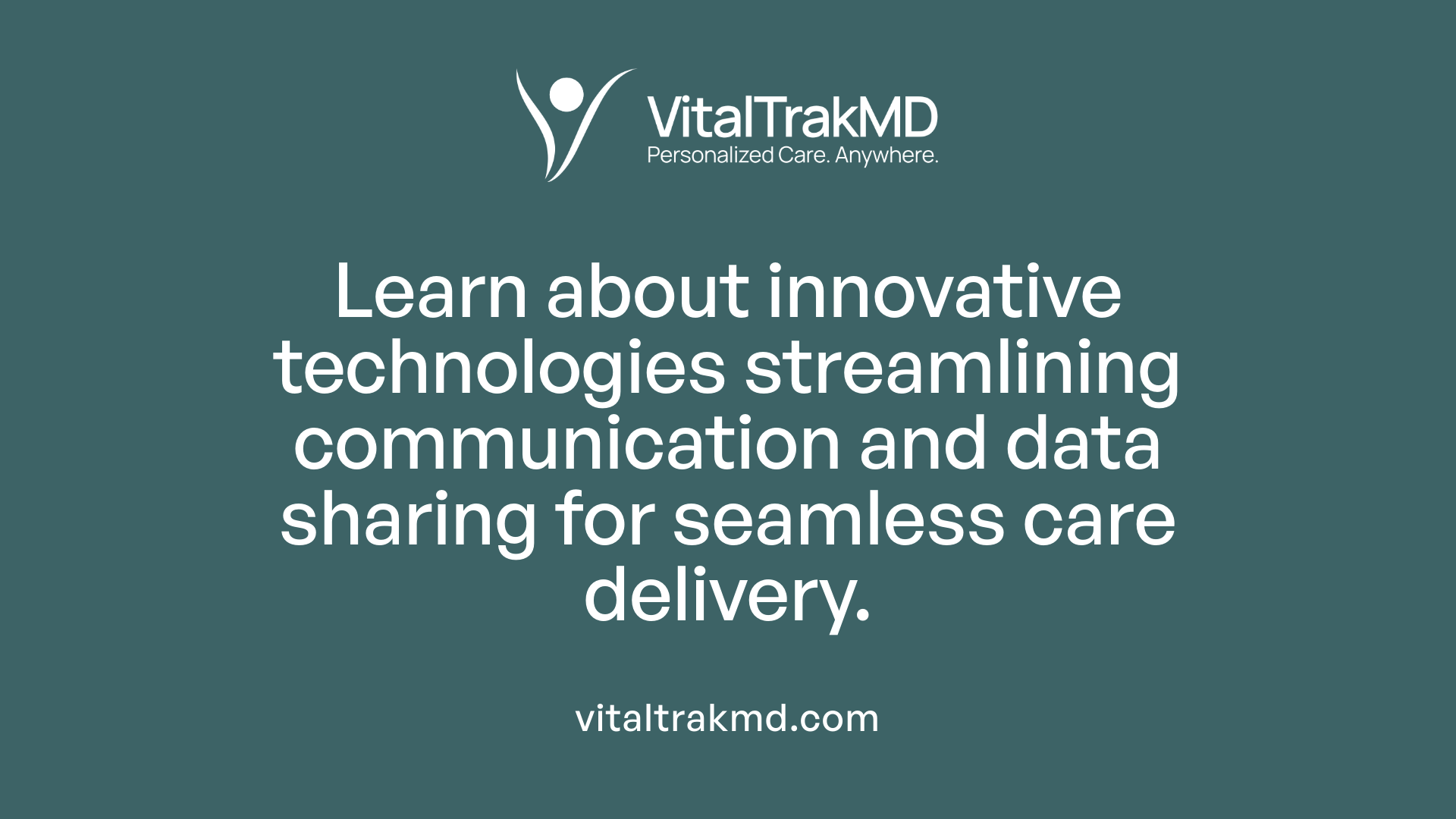
What technologies can improve care coordination?
Effective care coordination is essential for managing chronic diseases and ensuring patients receive seamless, continuous care. Several technological tools are instrumental in achieving this goal.
Electronic Health Record (EHR) systems are central to this effort. They compile comprehensive patient information, including medical histories, laboratory results, and treatment plans. EHRs enable authorized healthcare providers to access up-to-date data instantly, reducing errors and duplications.
Beyond individual records, health information exchange (HIE) networks facilitate secure, electronic sharing of medical data across different healthcare organizations. This interoperability ensures that all care team members are informed about a patient's treatment, regardless of where care occurs.
Care coordination tools, such as alerts and notifications embedded within EHR platforms, further support providers. For example, they can alert clinicians when a patient is hospitalized or experiences significant health events. These prompts enable timely follow-ups and intervention.
The integration of these technologies streamlines communication among providers, minimizes redundant testing, and enhances clinical decision-making. Successful examples, like Coastal Women’s Healthcare, show how implementing such systems can significantly improve the flow of information, leading to better health outcomes and more efficient care delivery.
| Technology | Functionality | Impact |
|---|---|---|
| Electronic Health Records | Centralized, detailed health information | Quick access to patient data, reduced errors |
| Health Information Exchange | Secure sharing of health data across providers | Improved coordination, fewer redundancies |
| Care Coordination Alerts | Notifications about patient events and alerts | Timely interventions, enhanced proactive care |
Harnessing these innovations allows healthcare systems to better manage chronic diseases by ensuring data continuity and fostering collaborative care models.
Frameworks and Strategies Supporting Digital Chronic Care
What are emerging models, strategies, or frameworks supporting tech-enabled chronic disease management?
One prominent emerging framework is the WHO Innovative Care for Chronic Conditions (ICCC) Framework. This approach builds on the traditional Chronic Care Model by adapting it to resource-constrained settings to maximize the benefits of technology in managing chronic diseases.
The ICCC emphasizes a broad, community-centered, and patient-focused strategy. It advocates integrating health promotion, disease prevention, and long-term management within the community fabric to create a resilient health system.
Key components of the ICCC include strengthening primary care by organizing health services more efficiently, training health workers in digital and traditional modalities, and improving community engagement. Information systems, such as electronic health records and remote monitoring devices, are vital tools that enable better coordination, tracking, and management of chronic conditions.
Strategies also focus on empowering patients through self-management tools and linking healthcare services with community resources. This ensures adherence to treatment plans and promotes healthier behaviors.
Overall, these frameworks aim to foster health systems that are adaptive, integrated, and capable of leveraging technology to provide consistent, accessible, and comprehensive care for individuals with chronic diseases. This approach is especially crucial in low-resource settings where traditional healthcare delivery may face significant barriers.
| Framework/Strategy | Focus Area | Implementation Examples |
|---|---|---|
| WHO ICCC Framework | Community-based, patient-centered care | Use of mobile health apps, community health workers |
| Primary care strengthening | Enhancing initial healthcare access | Training via tele-education, digital case management |
| Community engagement | Involving local populations in care | Health education campaigns, local health initiatives |
These models collectively work toward building smarter, more inclusive health systems that utilize innovative technology to improve the management of chronic illnesses worldwide.
Digital Health Solutions and Their Impact During Crises
How has digital health evolved during the COVID-19 pandemic?
The COVID-19 pandemic acted as a catalyst for the rapid advancement and adoption of digital health solutions, especially in managing chronic diseases. When in-person healthcare services were restricted, healthcare providers faced immense difficulties in maintaining ongoing care for patients with long-term health conditions. This urgent situation accelerated the deployment of telehealth platforms, enabling remote consultations that connected patients with their healthcare teams without physical visits.
Remote patient monitoring (RPM) devices became vital tools, capable of tracking vital signs such as blood pressure, blood glucose levels, and heart rate in real time. These devices allowed clinicians to continuously monitor patient health outside the clinical setting, intervening proactively if abnormalities were detected. Mobile health apps and web-based platforms played a significant role in supporting self-management, offering educational resources, medication reminders, and symptom tracking logs.
Despite the promising growth, the shift also uncovered existing inequalities in digital access. Many underserved populations lacked reliable internet or digital literacy, which limited their ability to benefit fully from these technological advances. The pandemic highlighted the urgent need for equitable digital infrastructure, ensuring all patients, regardless of socioeconomic status, could access the benefits of digital health.
In summary, COVID-19 accelerated digital health adoption, transforming chronic care delivery. It also emphasized the importance of addressing digital divides to build a resilient, accessible healthcare system for future crises.
Technological Innovations: Platforms and Programs Improving Chronic Care
What are some prominent health tech platforms supporting chronic disease management?
Several innovative platforms have emerged to enhance chronic care through technology. These solutions integrate data, automate care plans, and facilitate communication among care providers and patients.
CareCloud is a well-established platform founded in 1999, employing over 4,000 staff members. It offers an integrated system that consolidates patient information and automates treatment plans to improve management of chronic conditions.
Prevounce, launched in 2016 with a team of 11-50 employees, focuses on proactive and preventive care. Its goal is to transform lives by fostering early intervention and continuous health management.
HumHealth, established in 2015, emphasizes personalized patient care and precision medicine, aiming to tailor treatments and support for individuals with chronic illnesses.
HealthArc, founded in 2019 with a small team, provides a comprehensive platform that addresses holistic healthcare needs, including chronic disease management, by integrating various health services.
WellSky is a larger organization with over 1,000 employees that specializes in extending care beyond traditional clinical settings. Its solutions help improve communication and coordination in home health and community care.
Optimize Health, beginning operations in 2015 with 51-200 employees, concentrates on continuous improvement and innovative strategies to enhance chronic care management.
| Platform | Year Founded | Staff Size | Focus Area | Notable Features |
|---|---|---|---|---|
| CareCloud | 1999 | 4000+ | Care integration, automation | Data consolidation, care plan automation |
| Prevounce | 2016 | 11-50 | Preventive and proactive care | Early intervention, personalized health management |
| HumHealth | 2015 | 11-50 | Personalized care, precision medicine | Tailored treatment plans, patient engagement |
| HealthArc | 2019 | 11-50 | Holistic healthcare | Integration of various health services |
| WellSky | 2013 | 1000-5000 | Community and home health services | Seamless communication, care extension |
| Optimize Health | 2015 | 51-200 | Continuous care improvement | Innovative strategies, data-driven care |
These platforms exemplify how technology can support comprehensive and personalized approaches to managing chronic diseases, ultimately improving patient outcomes and care efficiency.
How do these platforms contribute to improving chronic disease management?
They provide tools for data integration, automating care strategies, and enhancing communication among care teams and patients. This connectivity ensures timely interventions, adherence to treatment plans, and proactive management, all essential for handling chronic conditions effectively.
Patient Engagement and Self-Management Technologies
How do mobile health applications support self-management?
Mobile health applications play a crucial role in empowering patients to take charge of their health. They offer features like medication reminders, symptom tracking logs, and tools for managing lifestyle changes. These functionalities allow patients with chronic conditions such as diabetes or hypertension to monitor their health actively and stay on top of their treatment plans.
Moreover, many of these apps incorporate behavioral coaching and incentivization elements, which motivate individuals to maintain healthy habits and adhere to their medications. This continuous engagement helps bridge the gap between clinic visits, providing real-time feedback and support outside the healthcare setting.
These digital tools facilitate better self-monitoring, set achievable health goals, and deliver educational content tailored to individual needs. As a result, patients become more autonomous in managing their conditions, leading to improved health outcomes and greater confidence in their ability to control their health.
In summary, mobile health apps foster ongoing interaction, promote adherence, and support lifestyle modifications, making them indispensable in modern chronic disease management.
Future Perspectives: AI, Wearables, and Data Integration
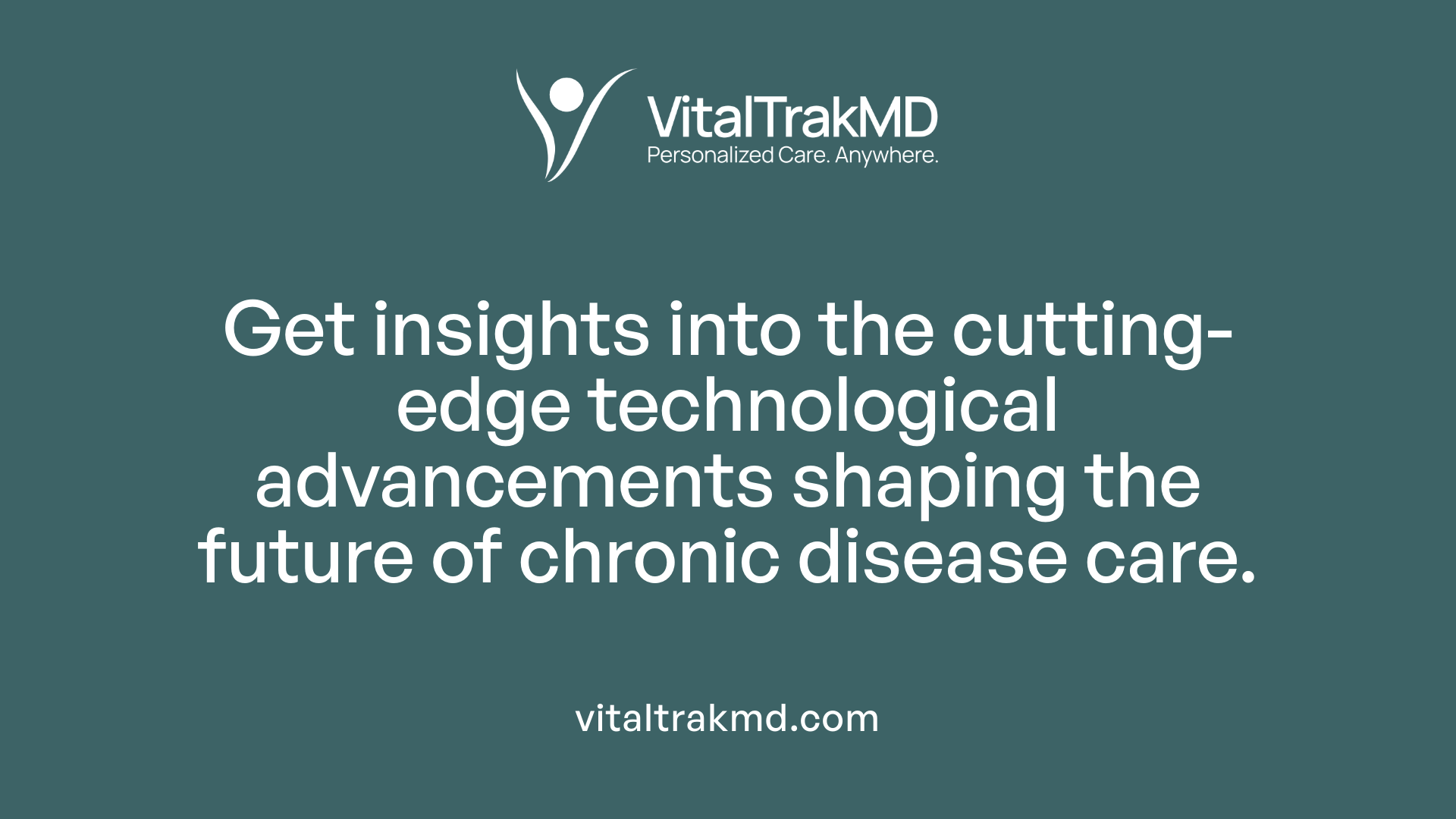
What technological advancements are shaping the future of chronic care?
The landscape of chronic disease management is rapidly evolving thanks to cutting-edge technological innovations. One of the most influential advancements is the incorporation of artificial intelligence (AI) and machine learning algorithms. These tools analyze large volumes of health data to identify risk patterns, forecast potential health deterioration, and predict individual responses to various treatments. This predictive capability enables preemptive interventions, potentially preventing complications before they arise.
Wearable devices are also transforming patient monitoring. Equipped with sensors, these devices can continuously track vital signs such as heart rate, blood pressure, glucose levels, and activity levels. Real-time data from wearables can be immediately processed to alert both patients and providers to early warning signs, facilitating timely adjustments in care plans.
Expanding telehealth services—including remote pharmacy consultations and virtual visits—further enhance access to care, especially for patients in rural or underserved communities. Telehealth reduces barriers related to transportation and mobility, making ongoing management more feasible.
Despite these promising developments, significant challenges remain. Data integration across multiple healthcare systems and devices poses a major hurdle. Many systems lack interoperability, making it difficult to aggregate and analyze data seamlessly. Overcoming these barriers through standardized protocols and secure data-sharing platforms is essential for realizing a truly integrated, data-driven approach.
Looking ahead, addressing these challenges will allow healthcare providers to deliver personalized, continuous care based on comprehensive and real-time health information. Such advancements are poised to improve patient outcomes, lower healthcare costs, and foster a more proactive model of chronic disease management.
More about the future of digital health in chronic care
Conclusion: Navigating the Road Ahead in Tech-Enabled Chronic Care
As technological innovations continue to advance, the landscape of chronic disease management is poised for unprecedented transformation. Systems thinking, coupled with new models and cutting-edge tools like AI, wearables, and integrated health platforms, will enable more proactive, personalized, and equitable care. Recognizing and addressing challenges such as data interoperability, digital inclusion, and healthcare workforce capacity are vital for realizing the full potential of tech-enabled strategies. The future of chronic care lies in a collaborative approach—integrating technology, community, and policy to elevate patient outcomes and optimize healthcare resources globally.
References
- The Role of Technology and the Chronic Care Model - PMC
- Top Chronic Care Management Companies in 2025 - CareCloud
- How Technology Can Help Your Office Crisis-Proof Chronic Care
- The Emerging Role of Technology in Chronic Disease Management
- How these health systems are transforming chronic disease care
- Systems thinking can help redefine chronic care approaches
- ChronicCareIQ - Remote Patient Monitoring Software
- Verily introduces Lightpath, a personalized, AI-powered chronic care ...
Recent articles
Want to Feel Better and Live Healthier?
Join hundreds of patients taking control of their health with personalized care that fits their life – not the other way around.
Rated 4.8/5 by 32+ customers



